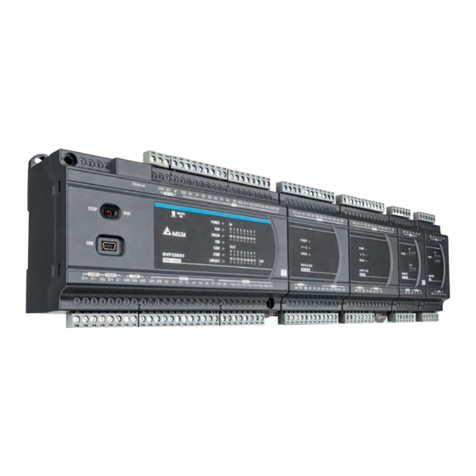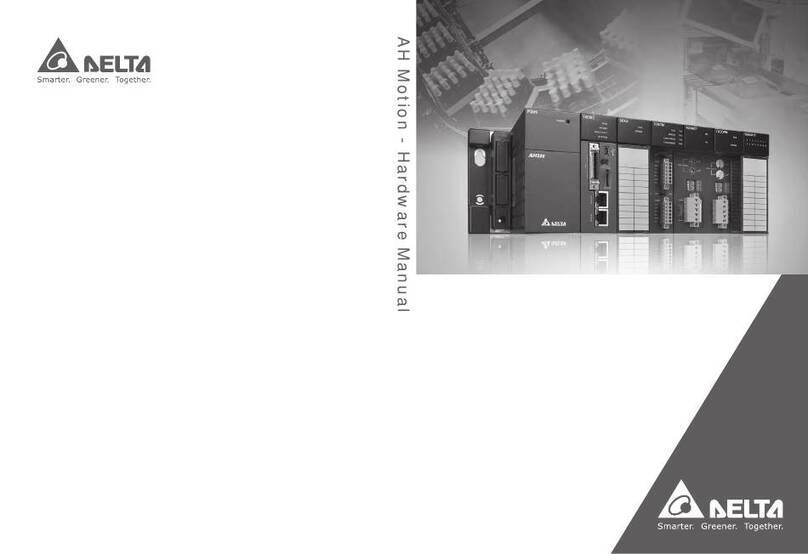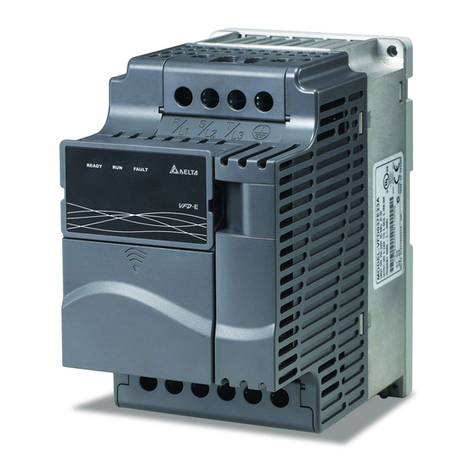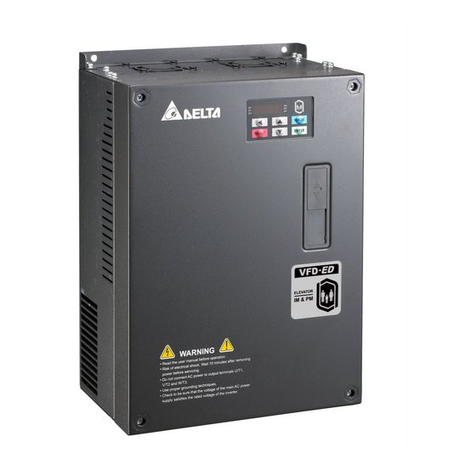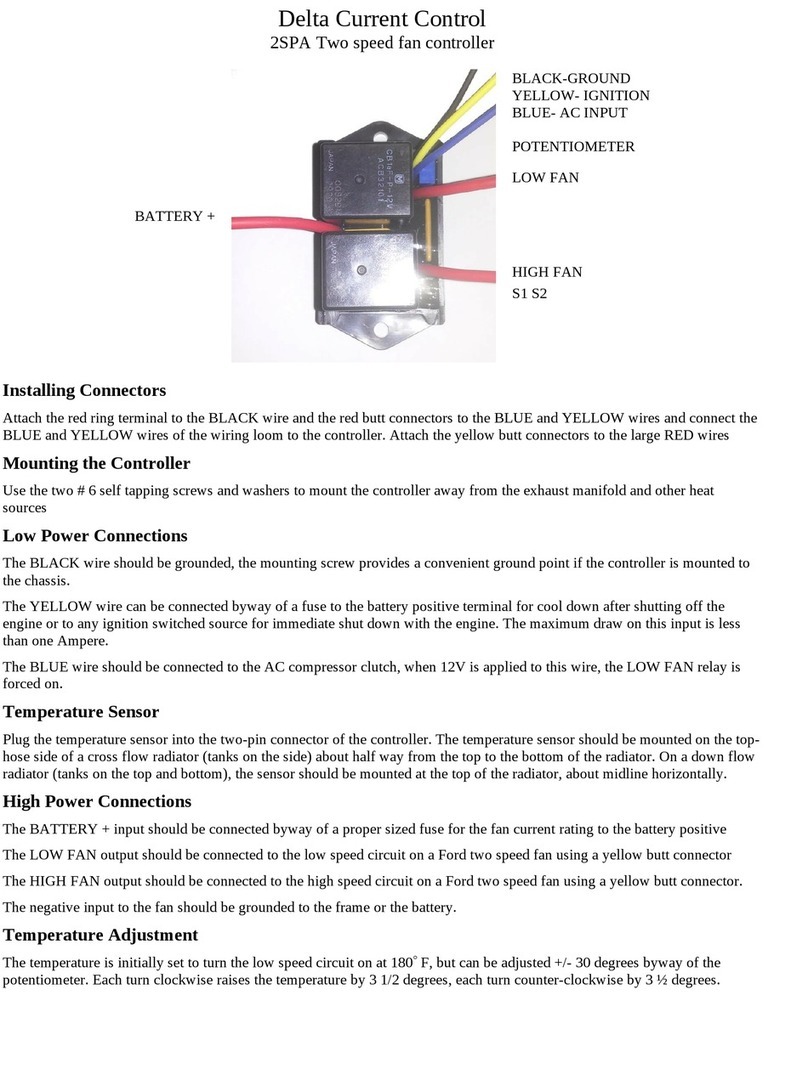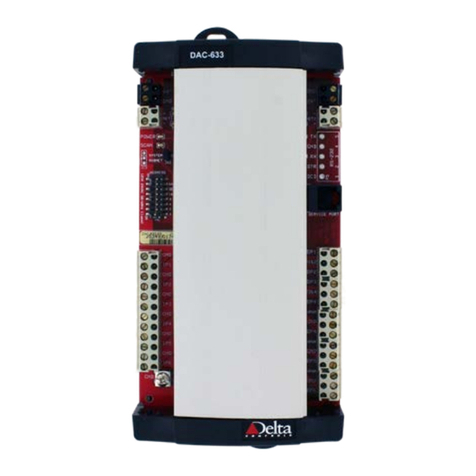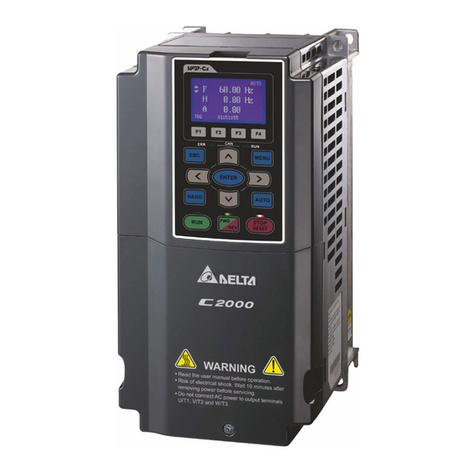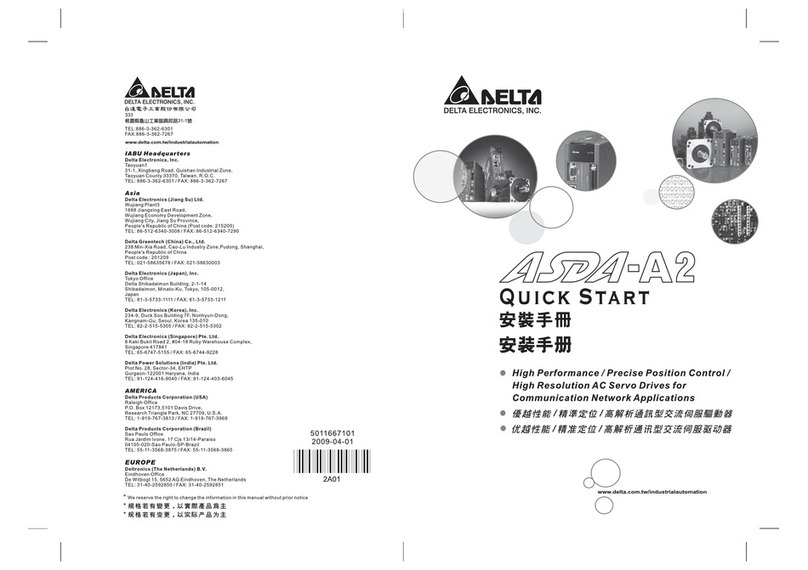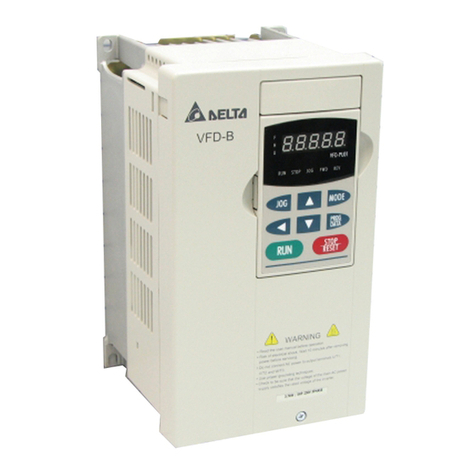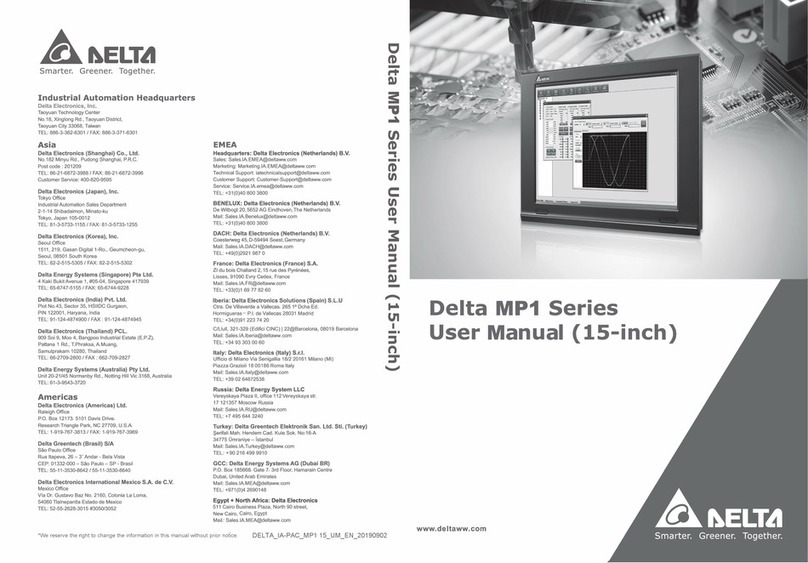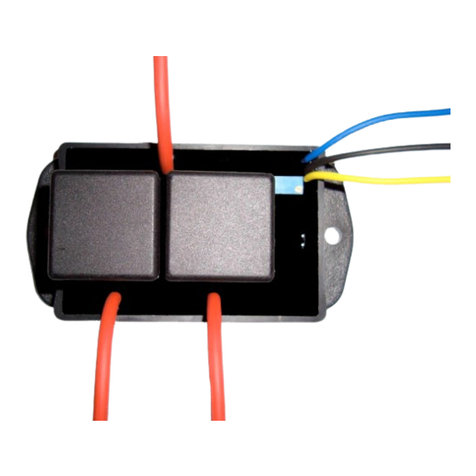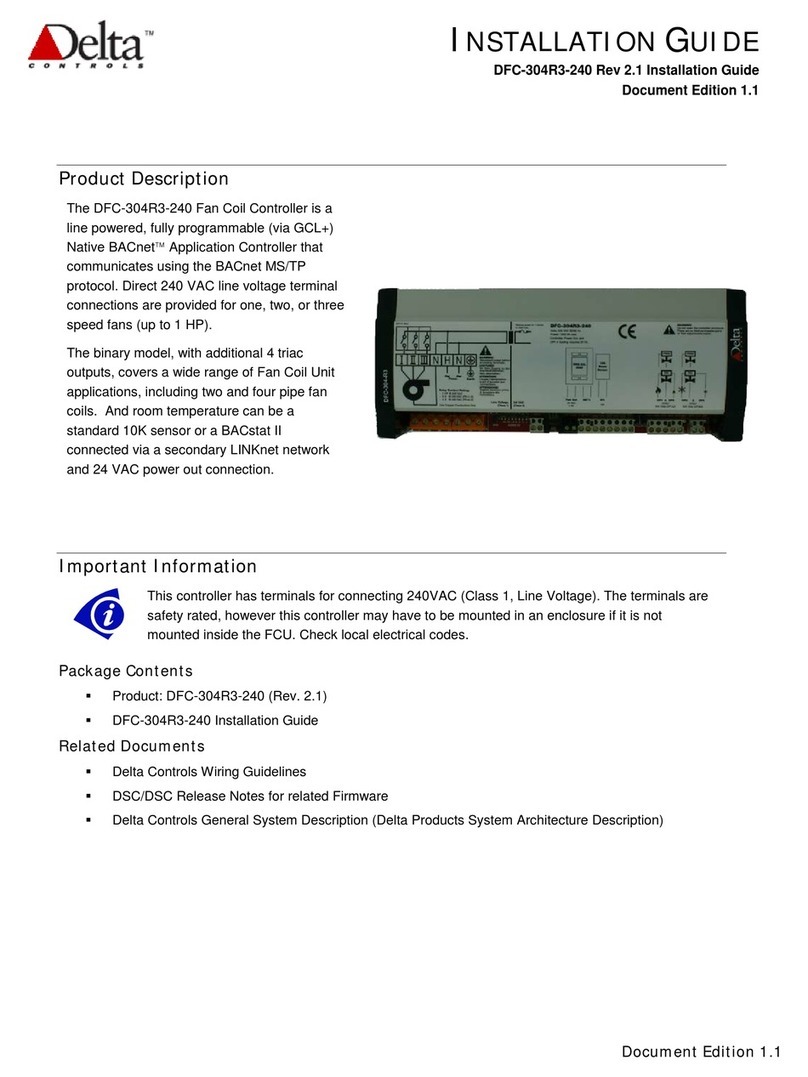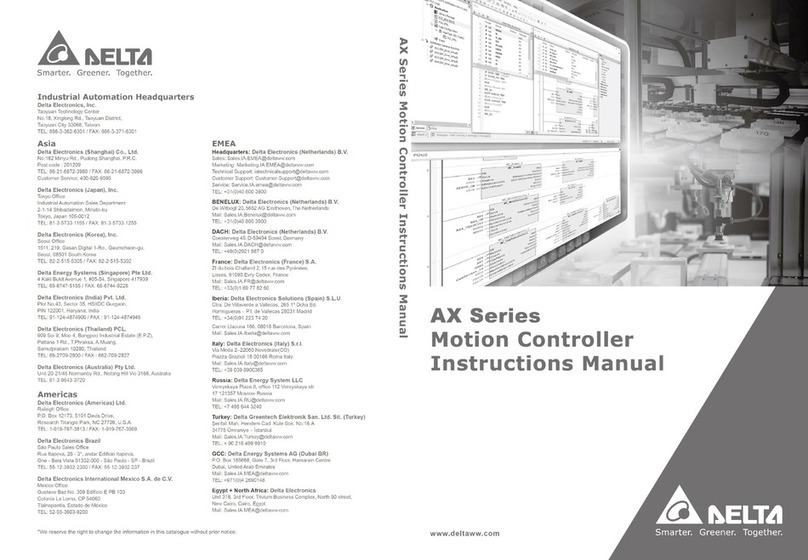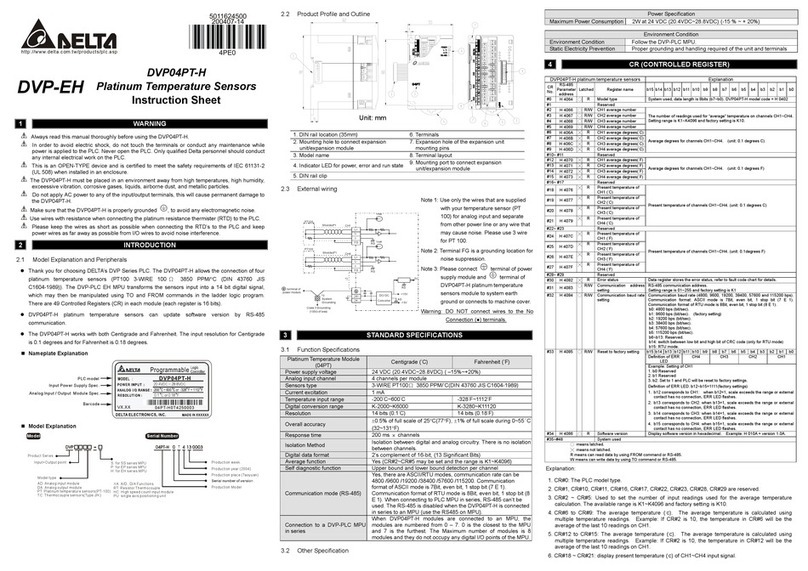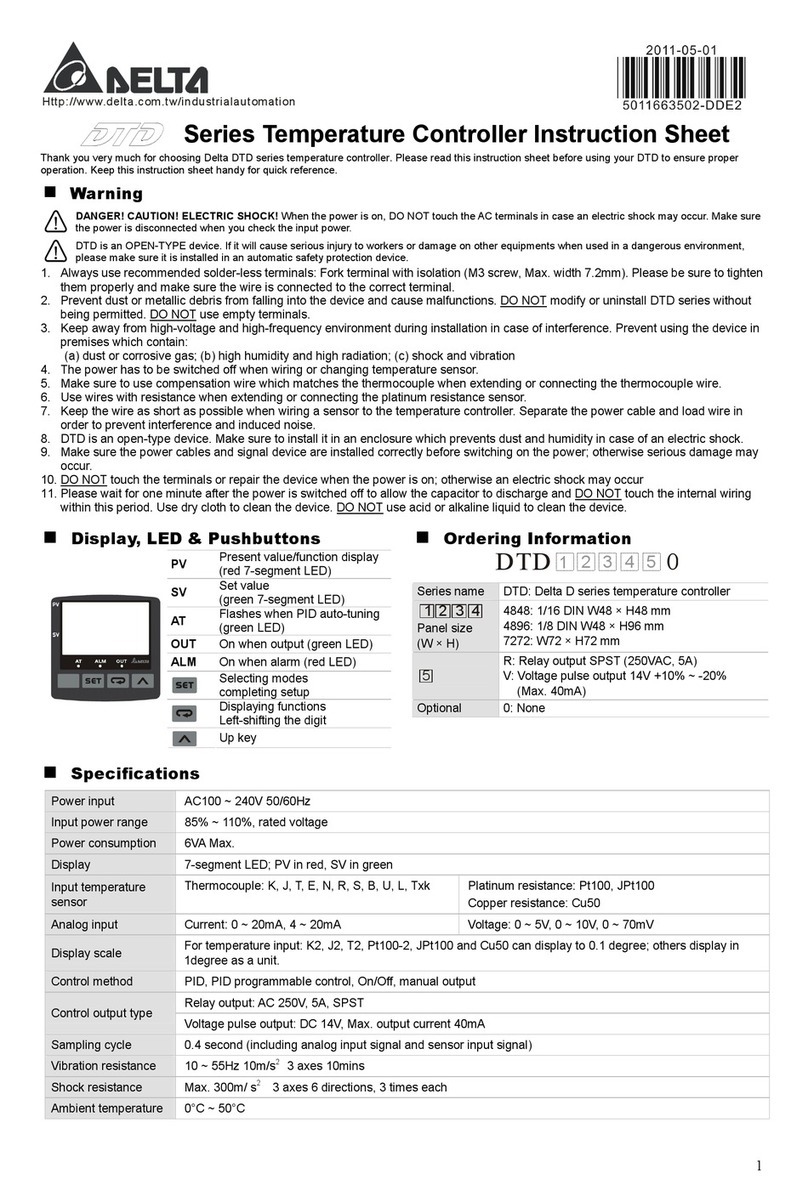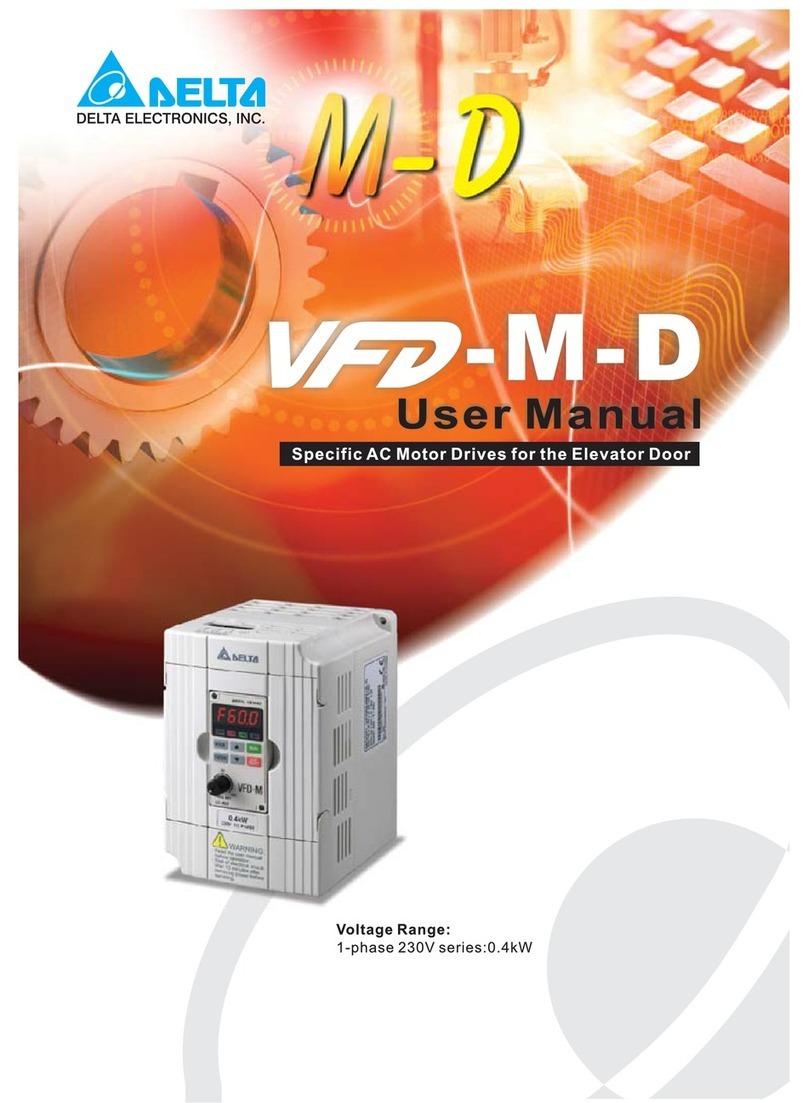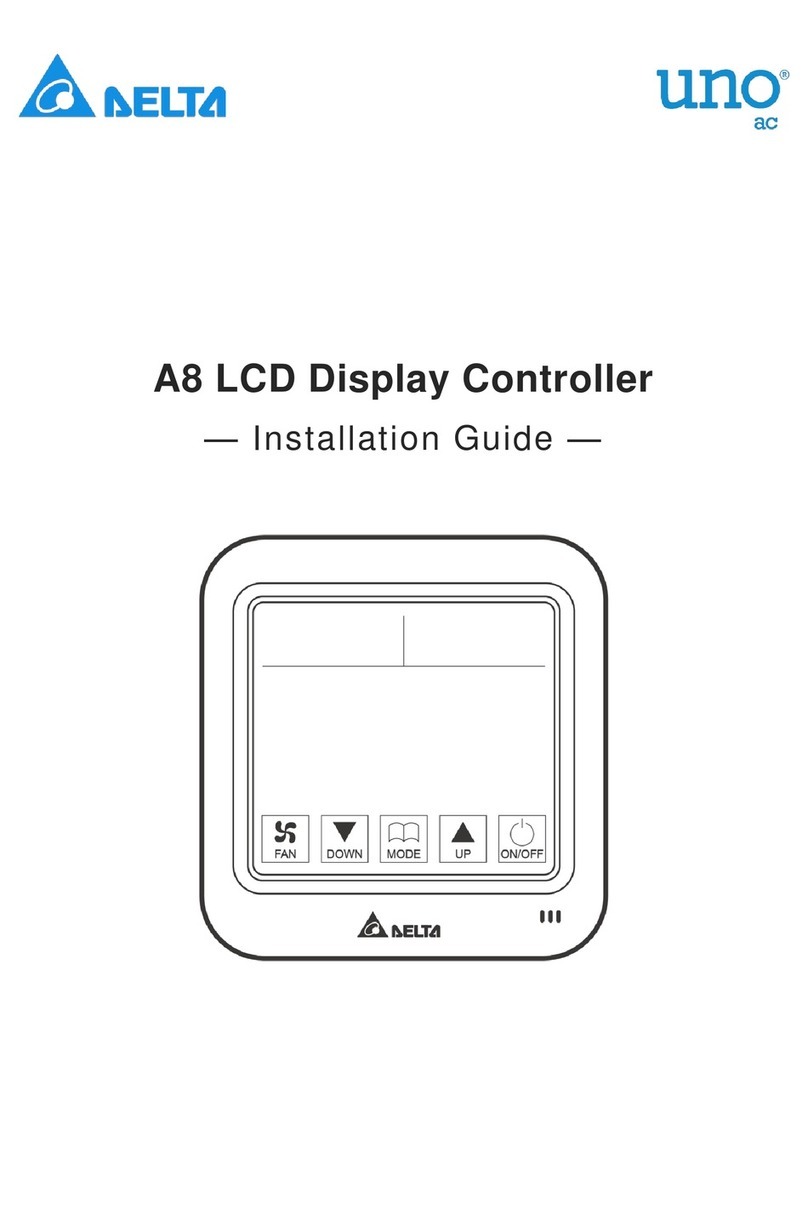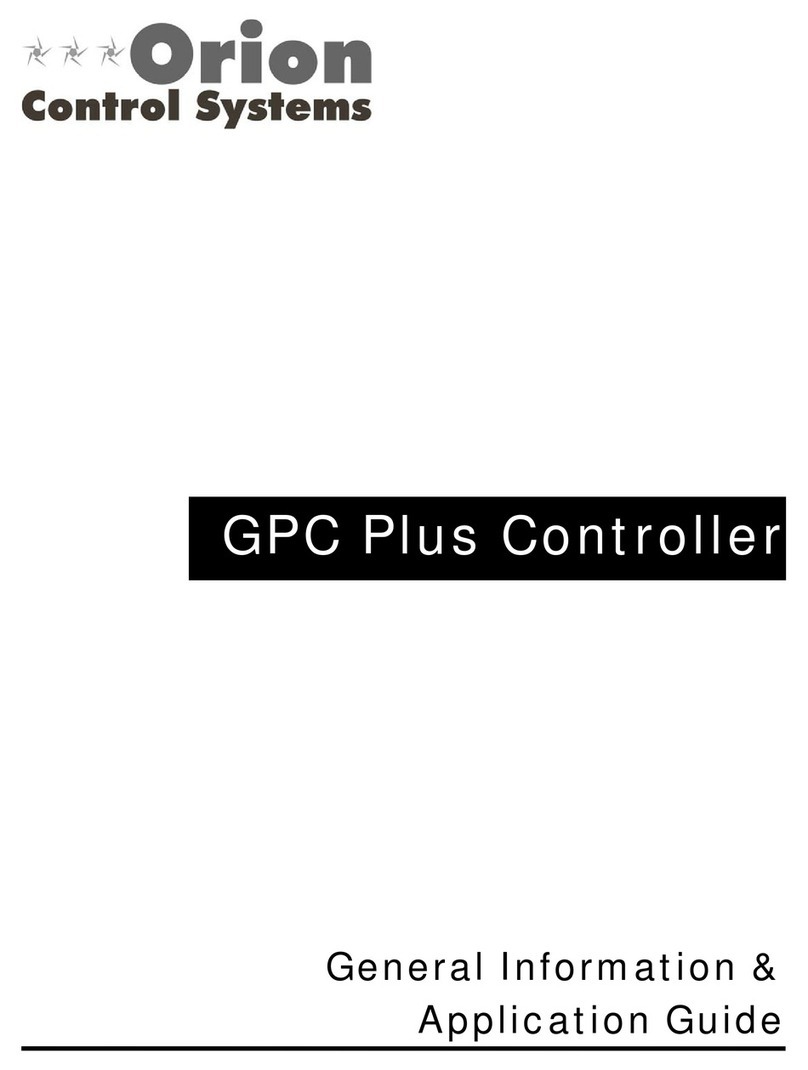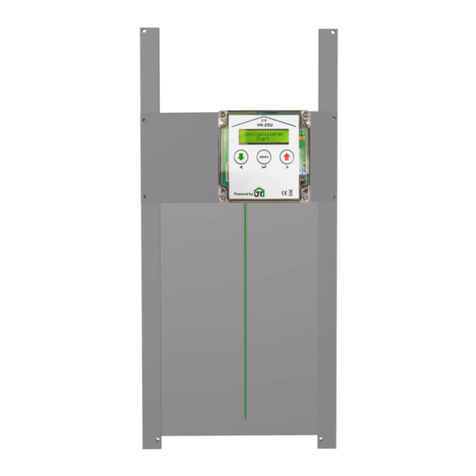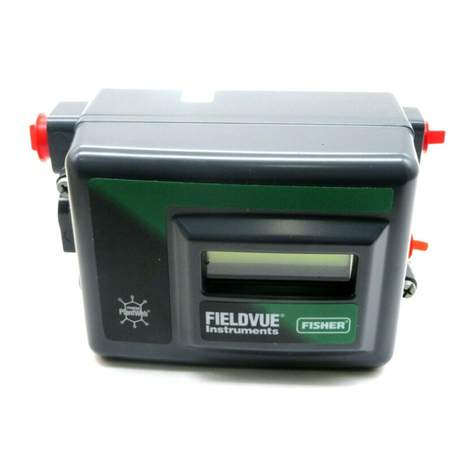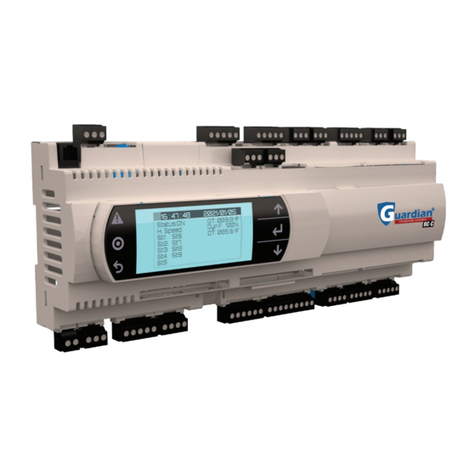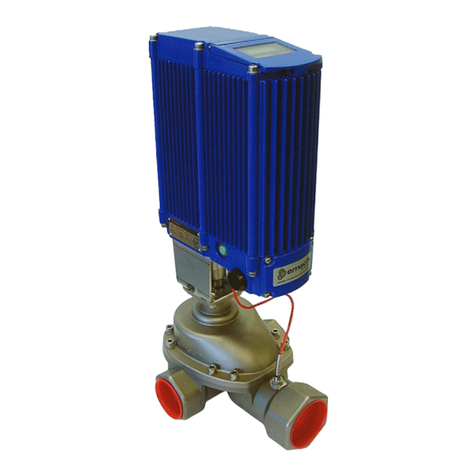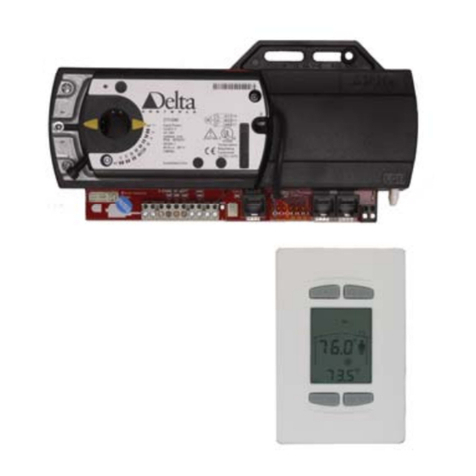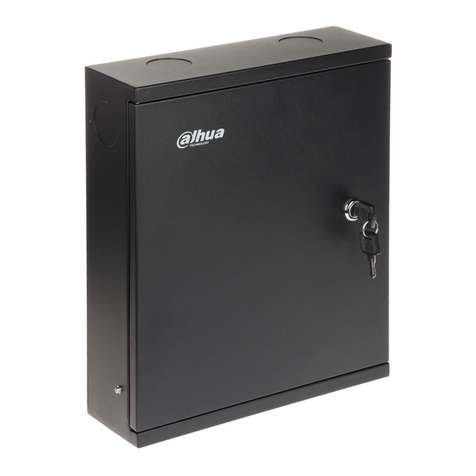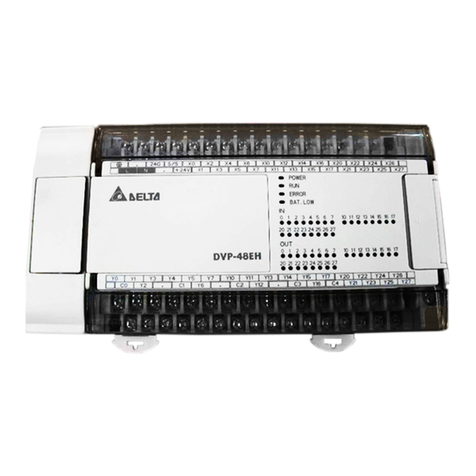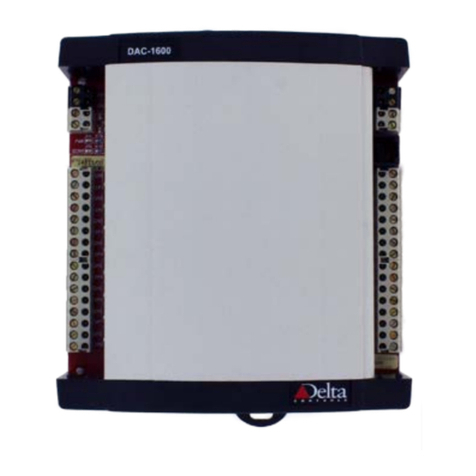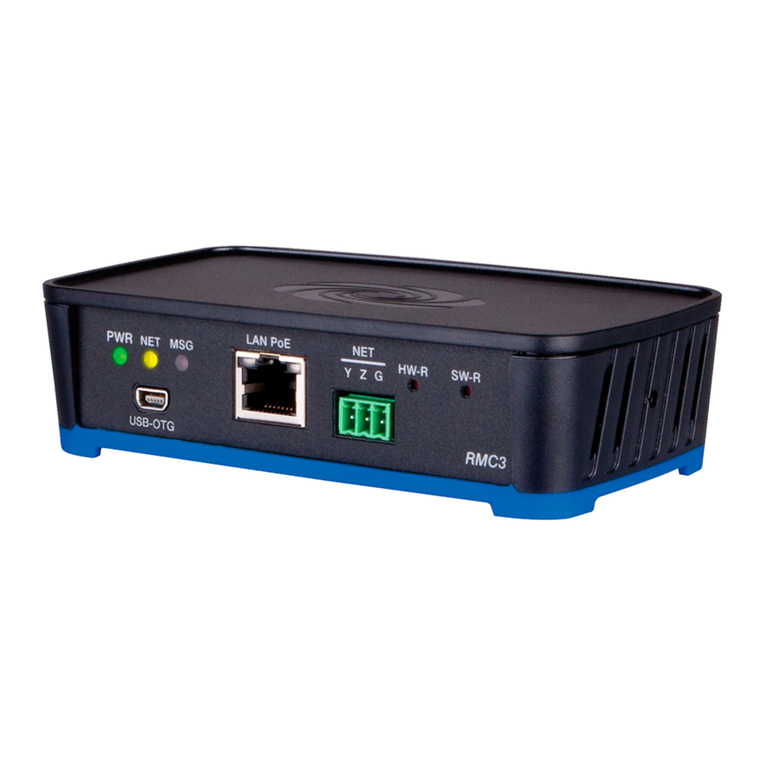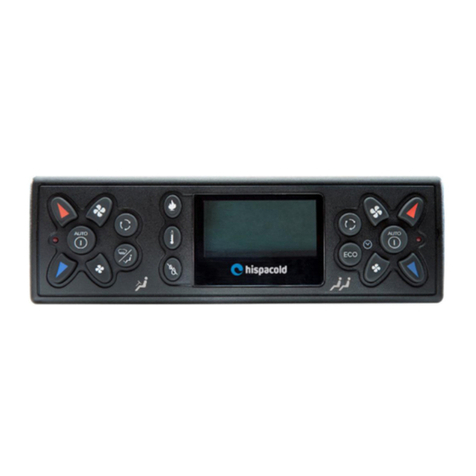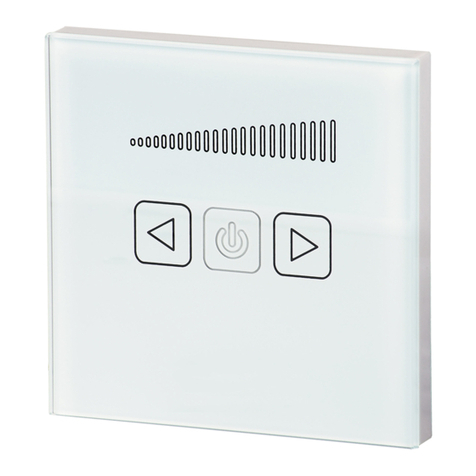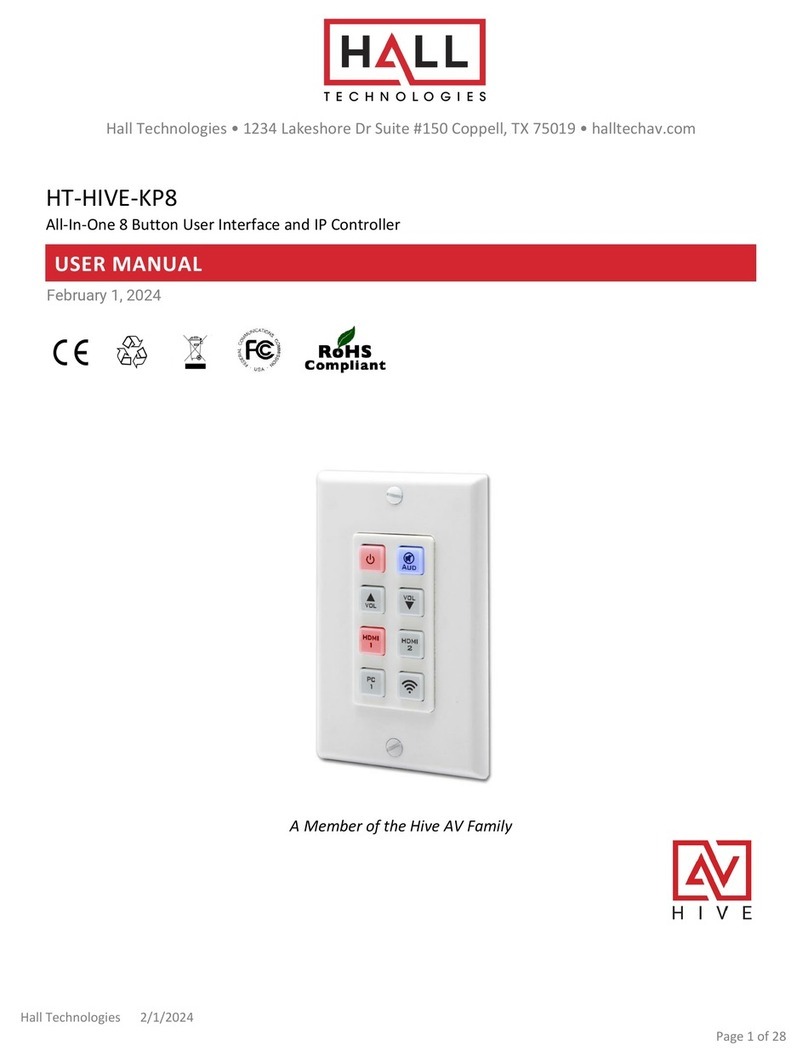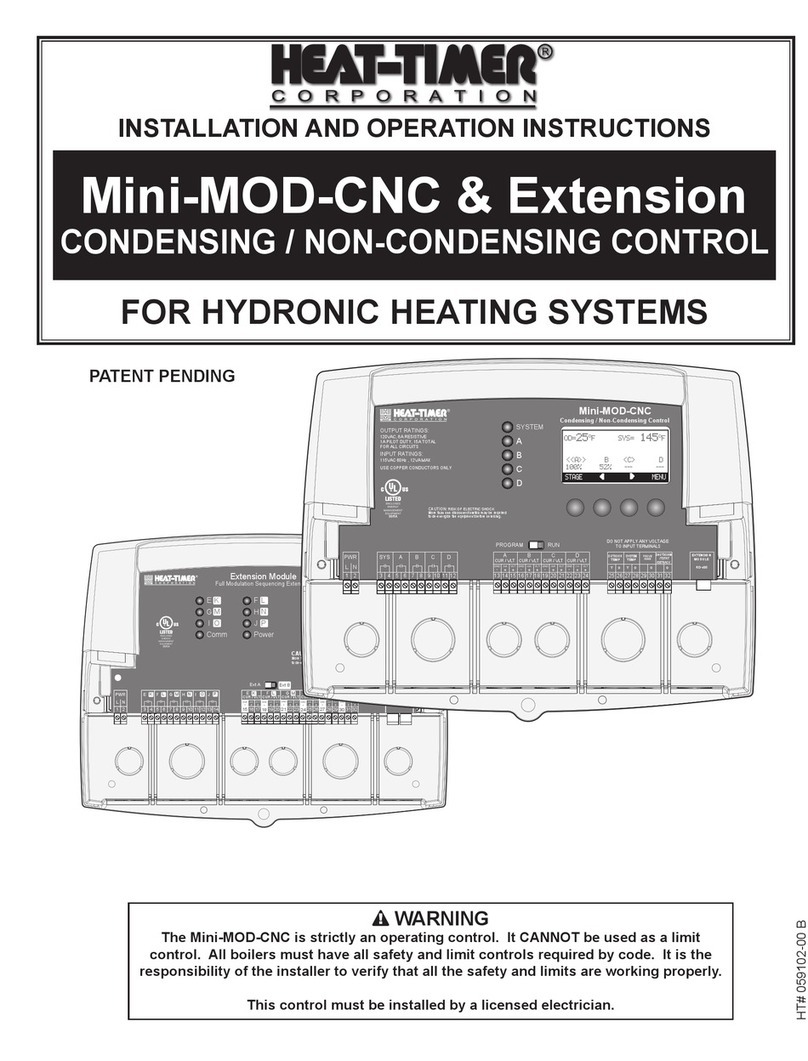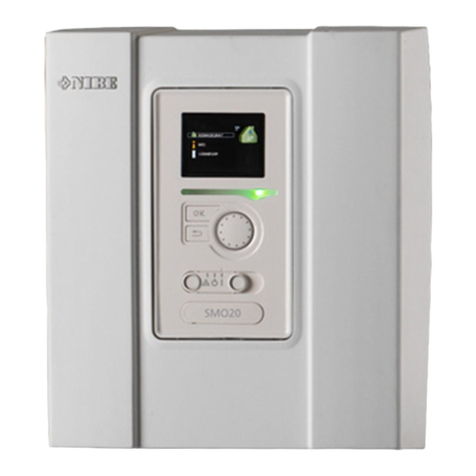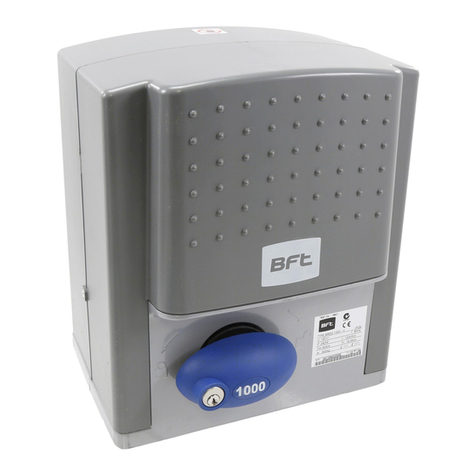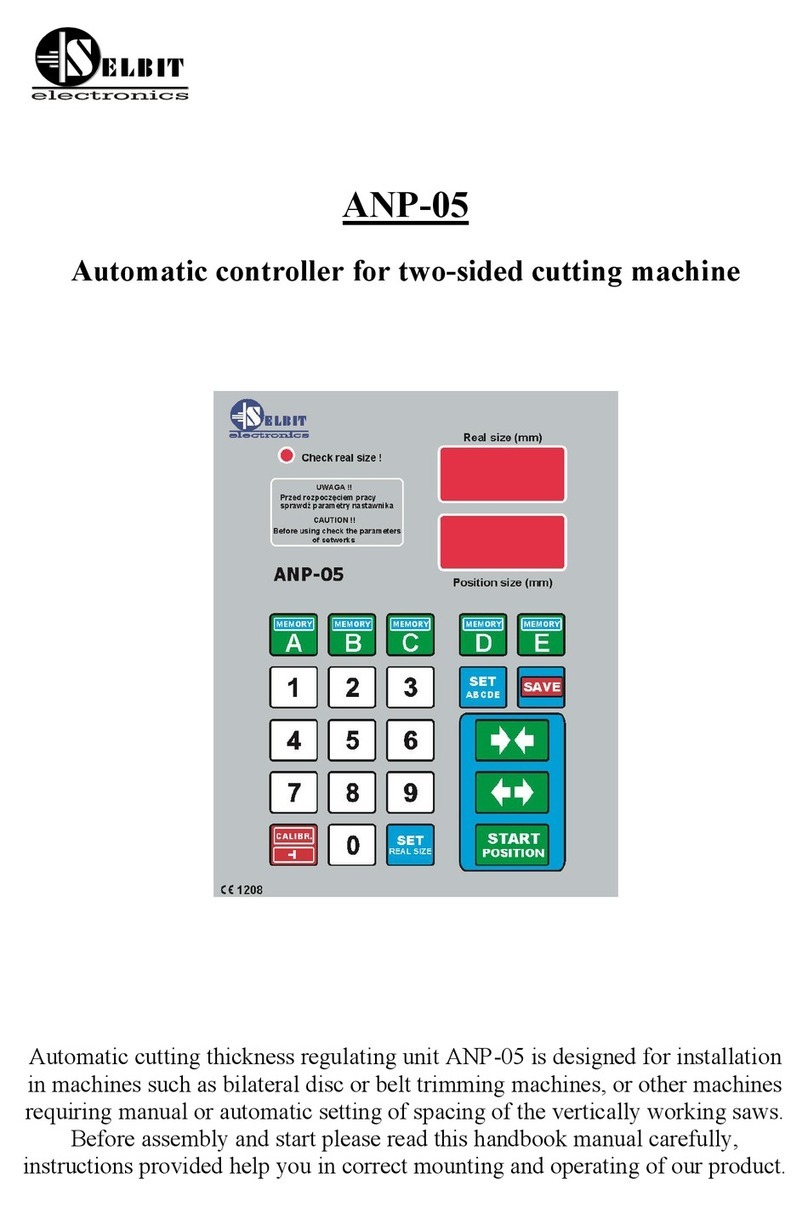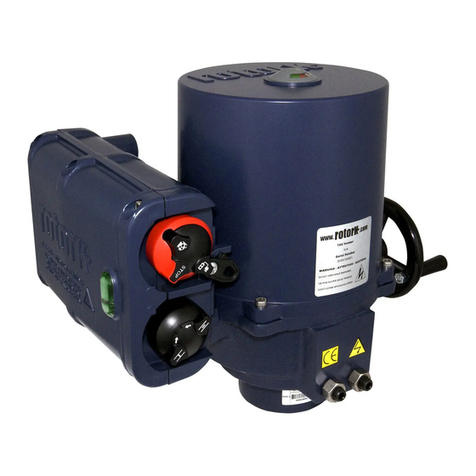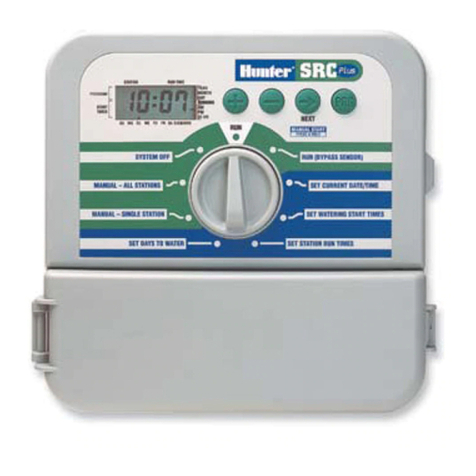
3.4 Wiring
Please note that:
1. Use O-type or Y-type terminal. See the figure in the right for its
specification. PLC terminal screws should be tightened to 5 ~ 8
kg-cm (4.3 ~ 6.9 in-Ibs) and please use only 60/75 ºC copper
conductor.
2. DO NOT wire empty terminal •
3. DO NOT drop tiny metallic conductor into the PLC while screwing
and wiring. Tear off the sticker on the heat dissipation hole for
preventing alien substances from dropping in, to ensure normal
heat dissipation of the PLC.
To suit M3.5 screw terminals
Below 6.2
Below 6.2
3.5 Power input wiring
The power input of DVP-EH2 series is AC. When operating the PLC, please make sure that:
1. The input voltage should be current and its range should be 100VAC ~ 240VAC. The power should be
connected to L and N terminals. Wiring AC110V or AC220V to +24V terminal or input terminal will result in
serious damage on the PLC.
2. The AC power input for PLC MPU and I/O extension modules should be ON or OFF at the same time.
3. Use wires of 1.6mm (or longer) for the grounding of PLC MPU.
4. The power shutdown of less than 10 ms will not affect the operation of the PLC. However, power shutdown time
that is too long or the drop of power voltage will stop the operation of the PLC and all outputs will go OFF. When
the power supply turns normal again, the PLC will automatically return to its operation. Please be aware of the
latched auxiliary relays and registers inside the PLC when programming.
AC Power Input
L N
2.0 A
DC/DC +5V
+24V 24G S/S X0 X1 X2
100~240VAC
0.5A is the maximum power supply for +24V power supply output terminal. DO NOT connect other external
power supplies to this terminal. Every input terminal requires 6 ~ 7mA to be driven; e.g. the 16-point input will
require approximately 100mA. Therefore, +24V cannot give output to extermal load that is more than 400mA.
3.6 Safety wiring
Since a PLC controls many devices, actions of any device may affect actions of other devices and the breakdown
of any one device may cause the breakdown of the whole auto-control system and danger. Therefore, we suggest
you wire a protection circuit at the power input terminal, as shown in the figure below.
c
AC power supply load
d
Power circuit protection fuse (3A)
e
Power indicator
f
Emergency stop
This button can cut off the system power supply when accidental
emergency takes place.
g
System circuit isolation device
The device is made of electromagnetic contactor and relay as the
switch to prevent the instability of system when the power is
intermittently supplied.
h
DVP-PLC (main processing unit)
i
Earth
MC
MC
NL
4
5
6
8
Guard
Limit
j
Power supply
AC: 100 ~ 240VAC, 50/60Hz
3.7 Input point wiring
There are two types of DC inputs, SINK and SOURCE.
Input point loop equivalent circuit Wiring loop
DC Signal IN
S/S
X0
Sinking
SINK mode
(common port for current input
S/S)
24VDC
24G
X0
S/S
+24V SINK
+5V
24G S/S X0 X1 X2+24V
Sink Type
Input point loop equivalent circuit Wiring loop
DC Signal IN
S/S
X0
Sourcing
SOURCE mode
(common port for current
output S/S)
24VDC
24G
X0
S/S
+24V SOURCE
+5V
24G S/S X0 X1 X2+24V
Source Type
3.8 Output point wiring
Relay (R) contact circuit wiring
Y0
RY
LED
C0
LOAD
POWER
DVP-**-**-**-R
RELAY OUTPUT
2
3
1
C0 Y0 Y1 C1 Y3 Y4 C2 Y6
9
6
c
Flywheel diode: To extend the life span of contact d
Emergency stop: Uses external switch
e
Fuse: Uses 5 ~ 10A fuse at the common port of output contacts to protect the output circuit.
f
Varistor: To reduce the interference on AC load g
Empty terminal: not in use
h
DC power supply i
Neon indicator
j
AC power supply k
Incandescent light (resistive load)
l
Manually exclusive output: Uses external circuit and forms an interlock, together with the PLC internal program, to ensure
safety protection in case of any unexpected errors.
Transistor (T) contact circuit wiring
Y0
LED
C0
< 0.5A
2
3
1
C0 Y0 Y1 C1 Y4 Y5 Y6 Y7
4
3
4
c
DC power supply d
Emergency stop
e
Circuit protection fuse f
Flywheel diode + inductive load
g
Manually exclusive output: Uses external circuit and forms an interlock, together with the PLC internal program, to ensure
safety protection in case of any unexpected errors.
[Trial Operation
Power indication
The “POWER” LED indicator on the front panel of PLC MPU (or extension module) will be on (in green) when the
MPU is powered. That the MPU is powered but the indicator is not on indicates that the 24VDC power supply of the
PLC is overloaded. You have to remove the wiring at terminal +24V and 24G and have another DC24V power
supply ready. That the “ERROR” LED indicator flashes continuously indicates that the +24V power supply for the
PLC is insufficient.
Low voltage indication
That the “LOW.V” indicator on the front panel of the PLC extension module is on indicates that the input voltage is
insufficient. All outputs of the module are disabled at this time.
Preparation
1. Before powering DVP-EH2, be sure that you have checked if the I/O wiring is correct. You may damage the
PLC if AC110V or AC220V is directly supplied to input terminals or the output wiring is short-circuited.
2. When the peripheral devices are used to write program into PLC: If the ERROR indicator does not flash, the
program you are using is legal and PLC is waiting for RUN instruction from you.
3. You can use HPP to test “force On/Off” of output contacts.
Operation & test
1. If the ERROR indicator does not flash, you can use RUN/STOP switch or peripheral device (HPP or WPLSoft)
to give RUN instruction and the RUN indicator should be continuously on at this time. That the RUN indicator
does not flash indicates PLC has no program in it.
2. When PLC is in operation, use HPP or WPLSoft to monitor the set value or temporarily saved value in the
timer, counter, and register and force On/Off of output contacts. That the ERROR indicator is on (not flashes)
indicates that part of the program exceeds the preset time-out. In this case, you have to check the program
and set On/Off of the power again (PLC automatically returns to STOP status at this time).
I/O response time
How to calculate the response time from the input signal to output operation of the PLC:
Response time = input delay time + program scan time (executed by the user) + output delay time
Input delay time 10ms (default); 0 ~ 60ms (adjustable). See the reference on how to use special register
D1020 ~ D1021.
Program scan time See the reference on how to use special register D1010.
Output delay time Approx. 10ms for relay modules, 20 ~ 30us for transistor modules
\How to identify abnormality of PLC
To identify abnormality from the indicators on the panel, please check:
POWER indicator
When PLC is powered, the POWER indicator on the front panel will be on (in green). If this indicator is not on when
the PLC is powered, remove the wiring of +24V terminal. If this indicator turns on at this time, the +24V DC output
is overloaded. In this case, DO NOT use DC power supply at +24V terminal and have another DC24V power
supply ready. If this indicator turns off after the overload is eliminated, your PLC is malfunctioned. Send your PLC
back to your distributor for repair.
RUN indicator
Check your PLC status. When PLC is running, this indicator will be on. You can use HPP, the ladder diagram
editing program or the switch on the panel to RUN or STOP PLC.
ERROR indicator
1. If you enter illegal program into PLC or use instructions or devices that exceed their range, this indicator will
flash (approx. every 1 sec.). When this happens, you have to obtain the error code from D1004 and save the
address where the error occurs in register D1137 (if the error is a general circuit error, the address of D1137 will
be invalid). Find out the cause of the error, amend the program and resend the program to PLC. If you cannot
connect to PLC and this indicator keeps flashing quickly (approx. every 0.2 sec.), there should be insufficient
24VDC power supply. Please check if the 24VCD is overloaded.
LFor details of error codes (in D1004, hex coding), see “DVP-PLC Application Manual: Programming”
2. If the ERROR indicator keeps flashing, you have to check the special relay M1008. M1008 is on indicates that
the execution time of program loop exceeds the preset time-out (in D1000). In this case, turn the RUN/STOP
switch to STOP, check the special register D1008 and obtain the location in the program where the time-out
takes place. We suggest you use WDT instruction to correct this problem.
BAT.LOW indicator
BAT.LOW indicator will be on when the battery is in low voltage. When this happens, change the battery as soon as
possible in case your program and data saved in the latched area will be lost.
LThe changing of battery has to be completed within 1 minute when the PLC is not powered in order to save your
procedures and data in the PLC.
After the power is switched off, the data in the latched area are stored in SRAM memory and its power is supplied
by the battery. Therefore, when the battery is in low voltage and the power-off has been lasted for more than 1
minute, the data in the latched area will be lost. If you need to permanently save the data in the latched area in the
program and device D, refer to “Flash ROM permanently saved and recover mechanism” as stated below.
Permanently saved mechanism
You can use WPLSoft (Options -> PLC<=>Flash) to indicate whether to permanently store the data in the
latched area in Flash ROM memory (new indicated data will replace all data previously saved in the memory).
Recover mechanism
If the battery is in low voltage (before the power is switched off when the BAT.LOW indicator is on) and the
power is off for more than 1 minute, PLC will automatically restore the data in the latched area in the program
and device D of Flash ROM into SRAM memory next time when it is re-powered.
Battery life:
Temperature (ºC) 0 25 50 70
Life (year) 9 8 6 5
Input indicator
On/Off of input point is indicated by input indicator or monitored by HPP. When the action criteria of the input point
are true, this indicator will be on. If abnormality is identified, check if the indicator and input circuit are normal.
Output indicator
On/Off of output point is indicated by output indicator. When the output indicator (On/Off) does not correspond to
the action of its load, please be aware of the follows:
1. The output contact may be melted or blocked out of overloading or short-circuited load, which will result in poor
contact.
2. If you are suspicious that the output point may execute undesired action, check the output wiring circuit and
whether the screw is properly tightened.
Accuracy (month/second) of RTC
Temperature (ºC/ºF) 0/32 25/77 55/131
Max. inaccuracy (second) -117 52 -132
The content of this instruction sheet may be revised without prior notice. Please consult our distributors or
download the most updated version at http://www.delta.com.tw/industrialautomation


